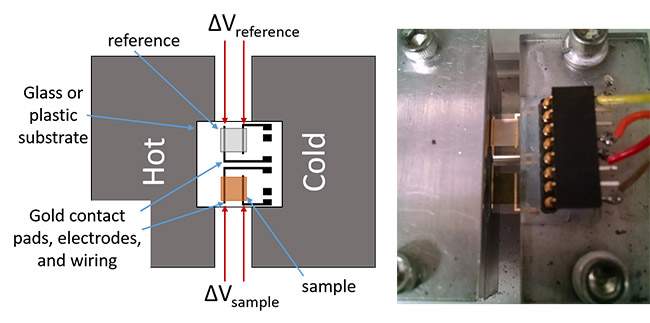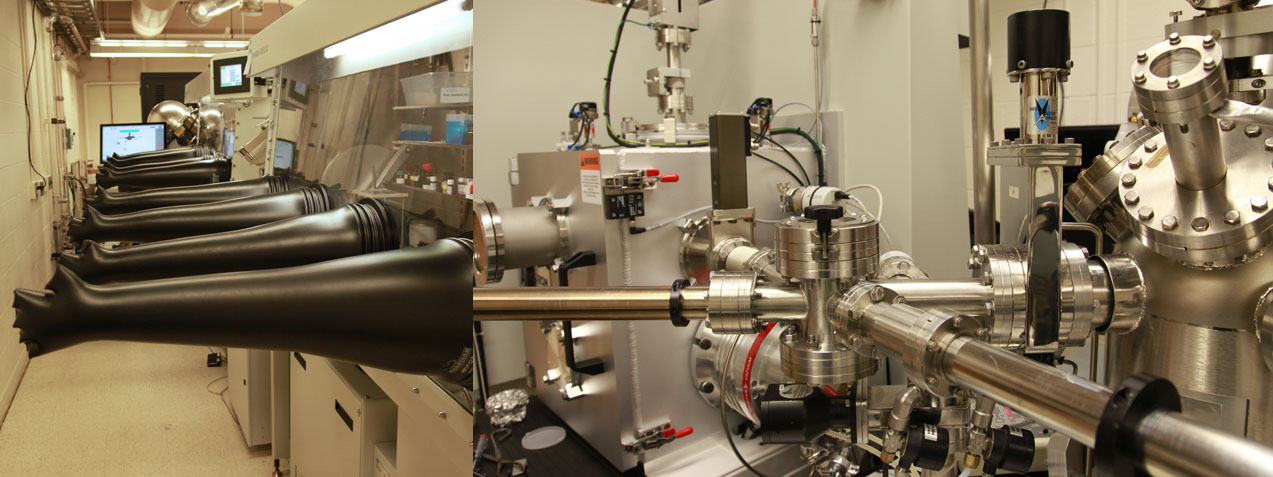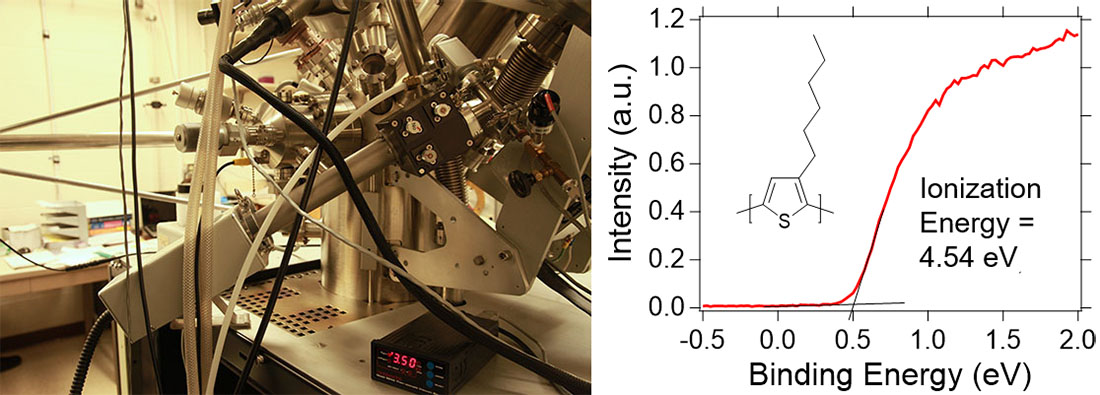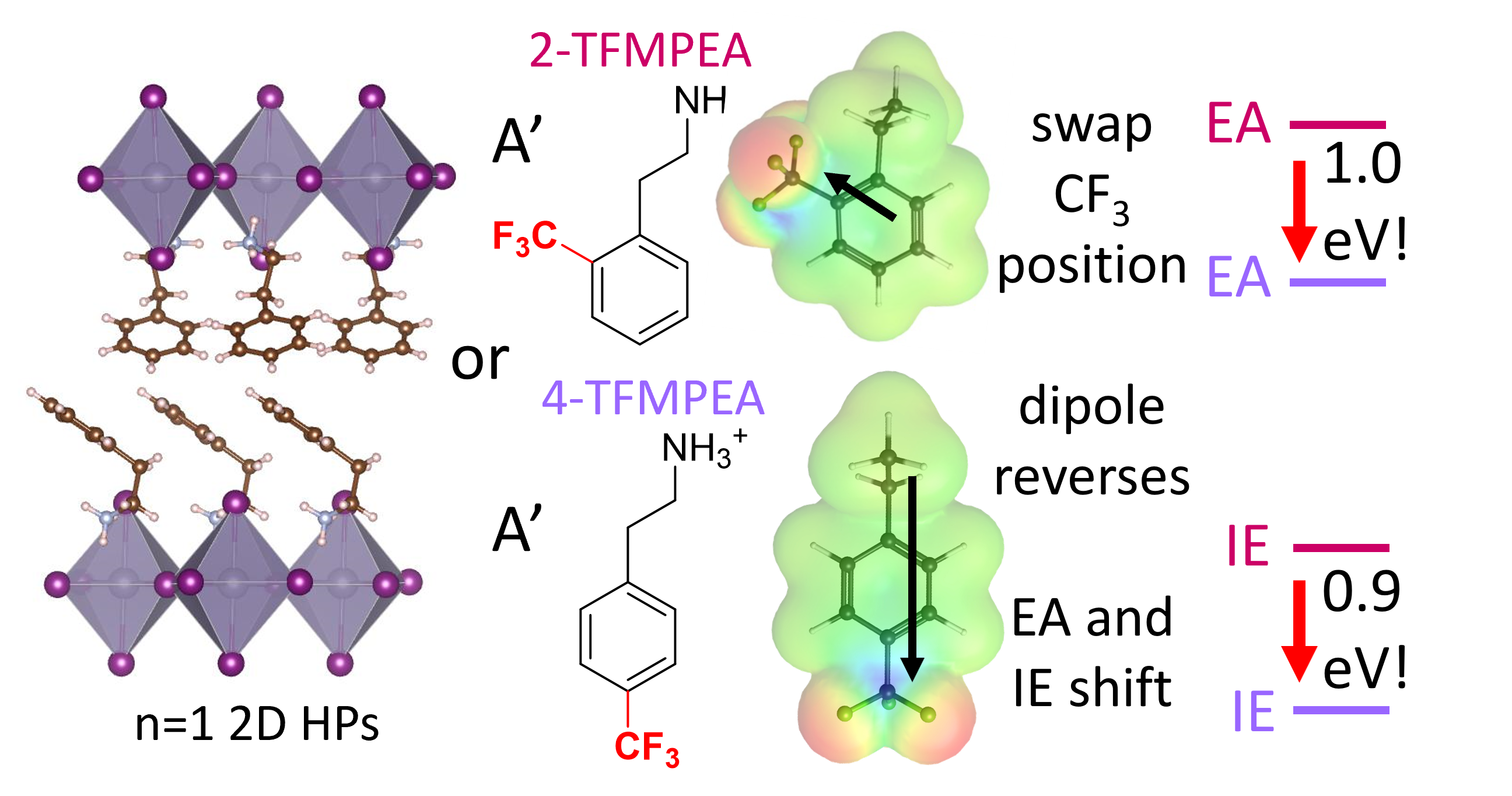Blog
2025-10-02: Carter Pryor and Nathan Bermeo-Ramirz (both undergrads in the Graham group) and Owen Galligan (undergrad in Sama group) received a best poster award at the Bioelectronics and Nanomedicine Research Day!
 2025-06-10 and 11: Graham, Paterson, and Risko groups host a 2-day workshop for teachers from around Kentucky. This was our second time hosting this workshop and it was enjoyed by all. The graduate students presented mini modules centered around the chemistry and physics in smartphones. We greatly appreciate all the participating graduate students and high school teachers!
2025-04-21: Congratulations to Henry Pruett on a successful dissertation defense! Henry's work is centered around the optical and electronic properties of 2D halide perovskites. Here, Henry pioneered the crystal growth of these materials in our lab and performed extensive characterization, including working as a DOE graduate student fellow in Matt Beard's lab at NREL for a year where he used terahertz, transient absorbance, and microwave conductivity to understand charge carrier dynamics. Henry could fix or build anything, especially if it involved 3D printing, and he will be missed!
2025-06-10 and 11: Graham, Paterson, and Risko groups host a 2-day workshop for teachers from around Kentucky. This was our second time hosting this workshop and it was enjoyed by all. The graduate students presented mini modules centered around the chemistry and physics in smartphones. We greatly appreciate all the participating graduate students and high school teachers!
2025-04-21: Congratulations to Henry Pruett on a successful dissertation defense! Henry's work is centered around the optical and electronic properties of 2D halide perovskites. Here, Henry pioneered the crystal growth of these materials in our lab and performed extensive characterization, including working as a DOE graduate student fellow in Matt Beard's lab at NREL for a year where he used terahertz, transient absorbance, and microwave conductivity to understand charge carrier dynamics. Henry could fix or build anything, especially if it involved 3D printing, and he will be missed!
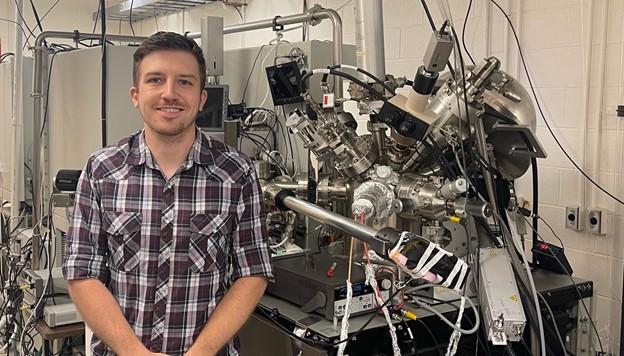 2025-04-07. Augustine Yusuf and Kevin Pedersen presented their posters at MRS, with Kevin earning a best poster nomination.
2025-04-07. Augustine Yusuf and Kevin Pedersen presented their posters at MRS, with Kevin earning a best poster nomination.
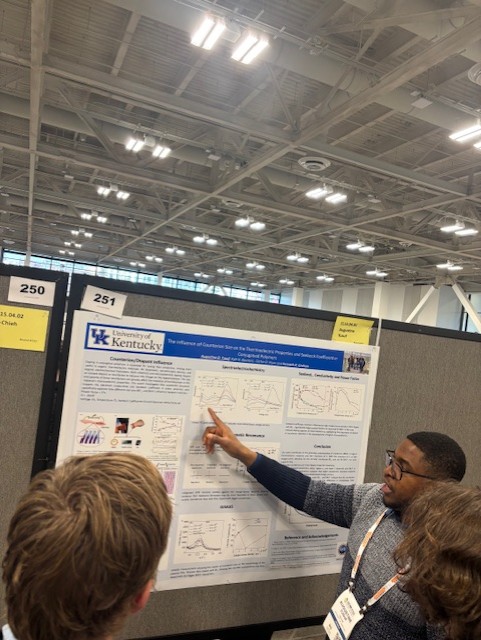
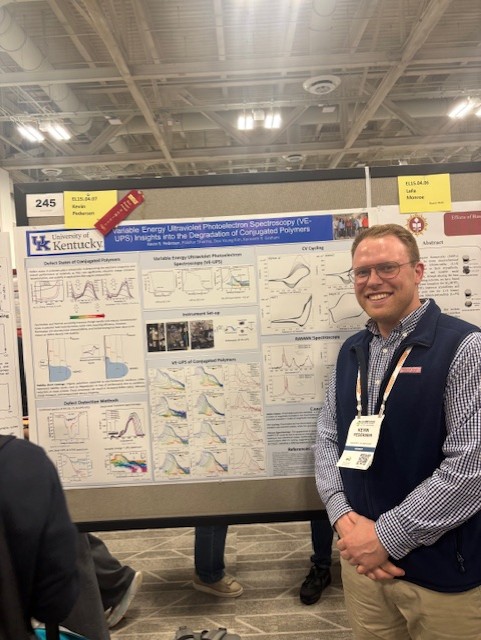 2024-11-12: We moved into a new lab in the summer of 2022. Below is a picture of our new lab space.
2024-11-12: We moved into a new lab in the summer of 2022. Below is a picture of our new lab space.
 2024-11-11:Increasing the stability of organic metal halide perovskites remains a major challenges. Led by Tareq Hossain, we show how the ammonium cation structure can be used to increase stability in 2D tin halide perovskites: https://pubs.acs.org/doi/10.1021/acs.chemmater.4c01251 Key points: Strong intermolecular interactions in the organic layer, low steric hindrance around the ammonium group, horizontally oriented inorganic sheets, and high hydrophobicity all lead to increased stability.
2024-11-11: The counterion can significantly influence the electronic and thermoelectric properties of doped conjugated polymers. Here, we show that the counterion size plays a role in determining whether the Seebeck coefficient changes sign upon heavy doping. Congratulations to Augustine Yusuf for leading the work and thanks to MRS Communications for including Ken Graham as an Early Career Distinguished Presenter at the 2023 Fall MRS Meeting. https://link.springer.com/article/10.1557/s43579-024-00665-x
2024-11-05: After significant effort, our 1990s PHI 5600 UHV system is now fully upgraded! We now have a gas cluster ion beam (GCIB) from Ionoptika and a new hemispherical energy analyzer with a 2D CMOS detector from SPECS (PHOIBOS 100). The GCIB provides the option to etch soft samples, such as organic semiconductors, with minimal damage to the remaining material, while the new electron energy analyzer increases signal to noise, allows fast acquisitions for probing degradation in real time, and greatly modernizes the software interface.
2024-11-11:Increasing the stability of organic metal halide perovskites remains a major challenges. Led by Tareq Hossain, we show how the ammonium cation structure can be used to increase stability in 2D tin halide perovskites: https://pubs.acs.org/doi/10.1021/acs.chemmater.4c01251 Key points: Strong intermolecular interactions in the organic layer, low steric hindrance around the ammonium group, horizontally oriented inorganic sheets, and high hydrophobicity all lead to increased stability.
2024-11-11: The counterion can significantly influence the electronic and thermoelectric properties of doped conjugated polymers. Here, we show that the counterion size plays a role in determining whether the Seebeck coefficient changes sign upon heavy doping. Congratulations to Augustine Yusuf for leading the work and thanks to MRS Communications for including Ken Graham as an Early Career Distinguished Presenter at the 2023 Fall MRS Meeting. https://link.springer.com/article/10.1557/s43579-024-00665-x
2024-11-05: After significant effort, our 1990s PHI 5600 UHV system is now fully upgraded! We now have a gas cluster ion beam (GCIB) from Ionoptika and a new hemispherical energy analyzer with a 2D CMOS detector from SPECS (PHOIBOS 100). The GCIB provides the option to etch soft samples, such as organic semiconductors, with minimal damage to the remaining material, while the new electron energy analyzer increases signal to noise, allows fast acquisitions for probing degradation in real time, and greatly modernizes the software interface.
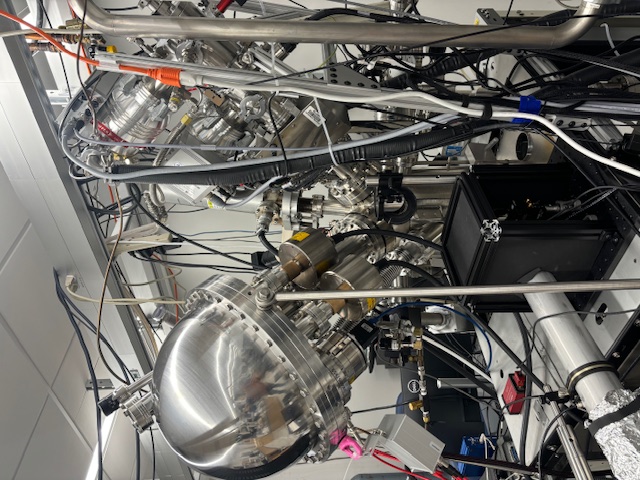 2024-11-05: We are happy to welcome our newest graduate student to the group, Niharika Mullapudi!
2024-08-27: The blog is back! With the Twitter (now X) feed not appearing on our homepage without an active X sign in, we have brought back the blog. All posts on X will apear here as well moving forward.
2020-07-01: The blog is no longer active, updates are shown on the feed from X on the homepage.
2020-06-11: The Graham group is now on Twitter @GrahamLabUKY. View our Twitter Feed for more recent updates.
2020-04-25: Congratulations to Cody Robinette for winning first prize at the UKY regional undergraduate poster competition!
2020-02-01: We received NSF support to work with Dr. Matt Beard at NREL on using transient reflectance spectroscopy to determine how interfacial chemistry and energetics determine interfacial recombination rates in metal halide perovskite materials for photovoltaics.
2019-12-01: Tuo Liu wins a fifth semester qualifying exam award!
2024-11-05: We are happy to welcome our newest graduate student to the group, Niharika Mullapudi!
2024-08-27: The blog is back! With the Twitter (now X) feed not appearing on our homepage without an active X sign in, we have brought back the blog. All posts on X will apear here as well moving forward.
2020-07-01: The blog is no longer active, updates are shown on the feed from X on the homepage.
2020-06-11: The Graham group is now on Twitter @GrahamLabUKY. View our Twitter Feed for more recent updates.
2020-04-25: Congratulations to Cody Robinette for winning first prize at the UKY regional undergraduate poster competition!
2020-02-01: We received NSF support to work with Dr. Matt Beard at NREL on using transient reflectance spectroscopy to determine how interfacial chemistry and energetics determine interfacial recombination rates in metal halide perovskite materials for photovoltaics.
2019-12-01: Tuo Liu wins a fifth semester qualifying exam award!
 2019-11-01: The Graham group welcomes three new graduate students, Kyle Baustert, Syed Joy, and Tareq Hossain (pictured).
2019-11-01: The Graham group welcomes three new graduate students, Kyle Baustert, Syed Joy, and Tareq Hossain (pictured).
 2019-09-01: We received a collaborative grant with the Risko group from the NSF to investigate how dopant and polymer structure impact the thermoelectric properties of conjugated polymers. Looking forward to working with the Risko group in this exciting area!
2019-07-21: Group outing on the Kentucky river!
2019-09-01: We received a collaborative grant with the Risko group from the NSF to investigate how dopant and polymer structure impact the thermoelectric properties of conjugated polymers. Looking forward to working with the Risko group in this exciting area!
2019-07-21: Group outing on the Kentucky river!

 2019-06-15: The Graham group participates in both STEM Camp and Chem Camp at UK - teaching elementary, middle, and high school students about energy, chemistry, and solar cells. The students all enjoyed testing solar cells and making their own dye-sensitized solar cells. Thanks to the NSF Center for Innovation in Solar Fuels for providing a nice experimental procedure. link
2019-04-25: Congratulations to Jonathan Nelson for receiving an honorable mention at the poster competition!
2018-12-01: Aslam Uddin wins a fifth semester qualifying exam award!
2019-06-15: The Graham group participates in both STEM Camp and Chem Camp at UK - teaching elementary, middle, and high school students about energy, chemistry, and solar cells. The students all enjoyed testing solar cells and making their own dye-sensitized solar cells. Thanks to the NSF Center for Innovation in Solar Fuels for providing a nice experimental procedure. link
2019-04-25: Congratulations to Jonathan Nelson for receiving an honorable mention at the poster competition!
2018-12-01: Aslam Uddin wins a fifth semester qualifying exam award!
 2018-11-01: The Graham group welcomes two new graduate students, Harindi Atapattu and Henry Pruett!
2018-11-01: The Graham group welcomes two new graduate students, Harindi Atapattu and Henry Pruett!

 2018-05-01: Zhiming Liang graduates from the group with a PhD! Congratulations Zhiming!
2018-05-01: Zhiming Liang graduates from the group with a PhD! Congratulations Zhiming!
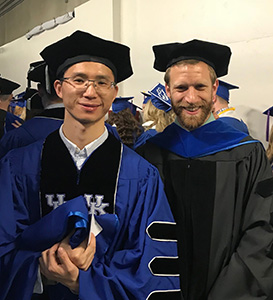 2018-04-19: Somin's collaborative paper with the Anthony group entitled "Processing Dependent Influence of the Hole Transport Layer Ionization Energy on Methylammonium Lead Iodide Perovskite Photovoltaics" is now published! link to ACS Appl. Mater. Interfaces 2018, 10, 15548-15557.
2018-04-19: Somin's collaborative paper with the Anthony group entitled "Processing Dependent Influence of the Hole Transport Layer Ionization Energy on Methylammonium Lead Iodide Perovskite Photovoltaics" is now published! link to ACS Appl. Mater. Interfaces 2018, 10, 15548-15557.
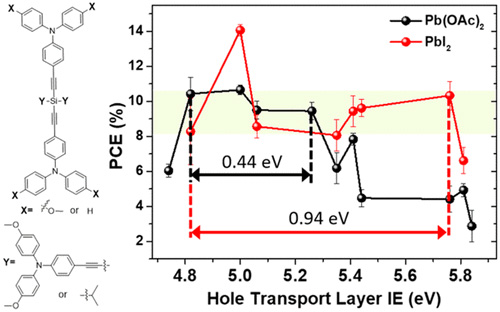 2018-03-14: Ashkan Abtahi, Alex Boehm, and Somin Park will present posters at the Materials Research Society Spring Meeting in Phoenix. Ken will present two talks at the meeting.
2018-03-14: Ashkan Abtahi, Alex Boehm, and Somin Park will present posters at the Materials Research Society Spring Meeting in Phoenix. Ken will present two talks at the meeting.
2018-02-08: Ashkan's paper entitled "Effect of Halogenation on the Energetics of Pure and Mixed Phases in Model Organic Semiconductors Composed of Anthradithiophene Derivatives and C60" is now published in the Journal of Physical Chemistry C.link to J. Phys. Chem. C 2018, 122, 4757–4767.
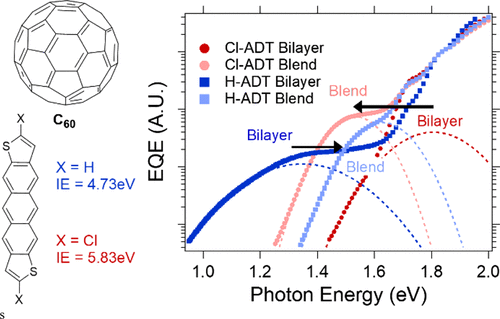 2017-12-12: Aslam Uddin receives an Outstanding Oral Qualifier Award! Congratulations Aslam on the award and in completing your oral qualifier!
2017-12-12: Aslam Uddin receives an Outstanding Oral Qualifier Award! Congratulations Aslam on the award and in completing your oral qualifier!
 2017-11-11: Ken hosted a workshop at GEMS (Girls, Engineering, Science, and Mathematics) where girls ranging from elementary to high school age made dye sensitized solar cells out of blackberries. link to http://w2.engr.uky.edu/gems/
2017-10-19: Tairan Wang arrived to work and learn in the group as a visiting graduate student from South China Normal University. Welcome Tairan!
2017-11-11: Ken hosted a workshop at GEMS (Girls, Engineering, Science, and Mathematics) where girls ranging from elementary to high school age made dye sensitized solar cells out of blackberries. link to http://w2.engr.uky.edu/gems/
2017-10-19: Tairan Wang arrived to work and learn in the group as a visiting graduate student from South China Normal University. Welcome Tairan!
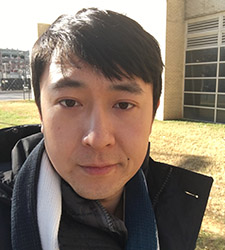 2017-08-10: Ken recevies a DOE CAREER award! The grant, entitled "Surface Ligand Effects on Energetics, Charge Transfer, and Stability at Interfaces Between Metal Halide Perovskites and Organic Semiconductors," will enable us to generate the necessary fundamental understanding of surface chemistry and interfacial processes in organometal halide perovskites to accelerate their further development. link to DOE announcement
2017-08-10: Ken recevies a DOE CAREER award! The grant, entitled "Surface Ligand Effects on Energetics, Charge Transfer, and Stability at Interfaces Between Metal Halide Perovskites and Organic Semiconductors," will enable us to generate the necessary fundamental understanding of surface chemistry and interfacial processes in organometal halide perovskites to accelerate their further development. link to DOE announcement
 2017-07-28: Zhiming's paper on the role of energy filtering in P3HT:TeNW nanocomposites is published in the Journal of Materials Chemistry A. link to J. Mater. Chem. A, 2017,5, 15891-15900.
2017-07-28: Zhiming's paper on the role of energy filtering in P3HT:TeNW nanocomposites is published in the Journal of Materials Chemistry A. link to J. Mater. Chem. A, 2017,5, 15891-15900.
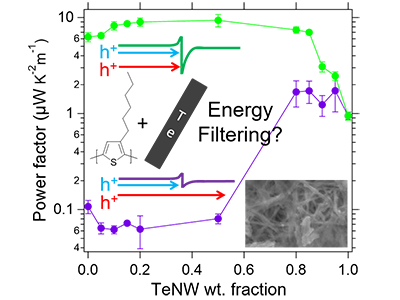 2017-06-12: Ken and all of the graduate students in the group helped middle schoolers at See Blue STEM Camp test silicon solar cells and make their own dye sensitized solar cells using blackberries. link to see blue STEM camp They even tested their cells outside under real world conditions and they worked!
2017-06-12: Ken and all of the graduate students in the group helped middle schoolers at See Blue STEM Camp test silicon solar cells and make their own dye sensitized solar cells using blackberries. link to see blue STEM camp They even tested their cells outside under real world conditions and they worked!
 2017-04-28: Undergraduate students Jillian Cramer and Thuy Nguyen present posters at the University of Kentucky Regional Poster Competition. Congratulations to both Jillian and Thuy for graduating this spring!
2017-04-28: Undergraduate students Jillian Cramer and Thuy Nguyen present posters at the University of Kentucky Regional Poster Competition. Congratulations to both Jillian and Thuy for graduating this spring!
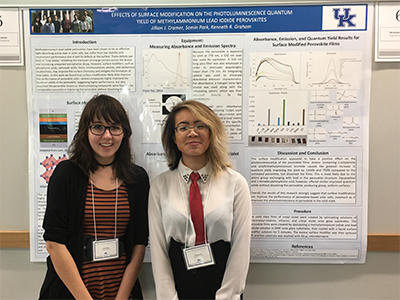 2017-03-31: Graduate students Ashkan Abtahi, Alex Boehm, Zhiming Liang, and Somin Park present posters at the Naff symposium.
2017-03-31: Graduate students Ashkan Abtahi, Alex Boehm, Zhiming Liang, and Somin Park present posters at the Naff symposium.
 2016-1-20: Our IPES setup is now complete!
2016-1-20: Our IPES setup is now complete!
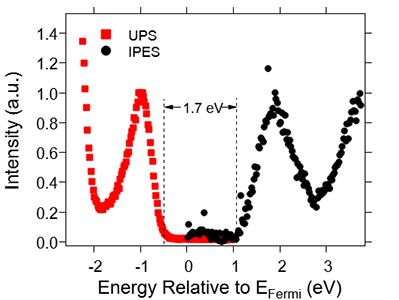
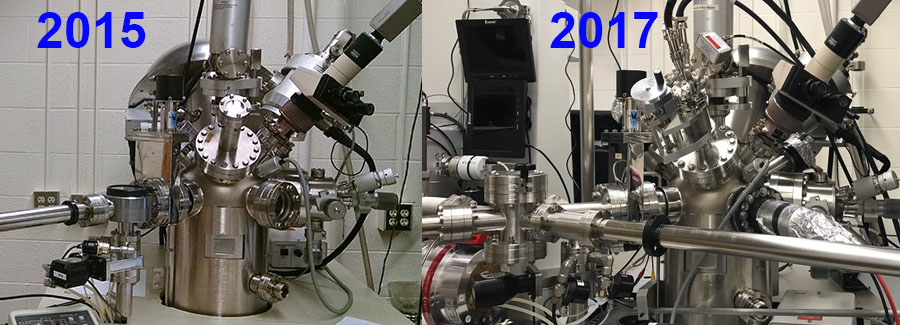
The above images show the transition of our UHV system from its start as a standalone XPS to being coupled to a thermal evaporator and having XPS, UPS, and now IPES. The spectrum shown is a combination of UPS and IPES measurements taken with our system on a ZnPc film. Our IPES design is based on a publication by Hiroyuki Yoshida (Chemical Physics Letters, 2012, 539–540, 180–185.) that utilizes a photomultiplier tube with bandpass filters as the detector. The system operates in the Bremsstrahlung isochromat mode, where the electron energy is scanned while the photon energy probed is constant. Our IPES system measures photon energies of less than 5 eV, as selected with an interchangeable bandpass filter, which is less than half of the photon energy probed by typical IPES instruments. Through probing lower energy photons we are utilizing lower energy electrons, which greatly reduces sample damage. Combined with our H Lyman-α source for UPS, our system provides an unprecedented ability to investigate more damage prone materials, such as organics and perovskites. Congratulations to graduate students Alex and Ashkan for setting up this awesome system!
2016-12-15: Congratulations to Somin Park on graduating with her Masters in Chemistry! Somin will continue to work in the Graham Research Group as she pursues a PhD in the Department of Materials and Chemical Engineering at UK.
 2016-12-01: Alex's paper on our new H Lyman-α photon source (10.2 eV emission) is now published in Organic Electronics! Link to publication
2016-12-01: Alex's paper on our new H Lyman-α photon source (10.2 eV emission) is now published in Organic Electronics! Link to publication
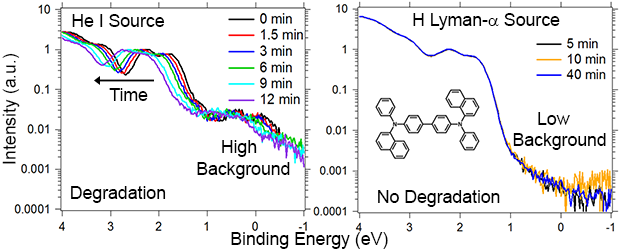
We report on a novel VUV photon source for UPS measurements that utilizes H Lyman-α emission with a narrow linewidth and a widely tunable intensity, and apply it to a number of organic materials of interest to show its ability to overcome the problem of sample degradation commonly observed with typical He I UPS sources. The H Lyman-α source displays no measureable higher energy emission lines, which significantly reduces the background over typical He I discharge sources and allows for the onset of the density of states to be clearly observed over several orders of magnitude.
2016-11-29: Ken presented two seminars at MRS, one on our recent work with organic-inorganic thermoelectric composites and the other on writing scientific papers. The seminar entitled The Science (and Art) of Writing Scientific Papers was hosted by the Student Chapter of MRS at KAUST.
2016-10-20: We received an ACS PRF grant to carry out research on polymer blend thermoelectrics!
 2016-08-30: Undergraduate senior Jillian Cramer joins the group!
2016-08-30: Undergraduate senior Jillian Cramer joins the group!
 2016-07-14: Kamal Butrouna will leave the group to start a faculty position at the University of Western Carolina. Congratulations Kamal!
2016-07-14: Kamal Butrouna will leave the group to start a faculty position at the University of Western Carolina. Congratulations Kamal!
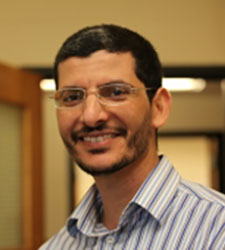 2016-04-22: Undergraduates Christopher Hayden, Cameron Day, and John Dunlap present posters at the University of Kentucky Regional Poster Competition. John Dunlap (pictured below) receives an honorable mention. Congratulations to all of these graduating seniors!
2016-04-22: Undergraduates Christopher Hayden, Cameron Day, and John Dunlap present posters at the University of Kentucky Regional Poster Competition. John Dunlap (pictured below) receives an honorable mention. Congratulations to all of these graduating seniors!
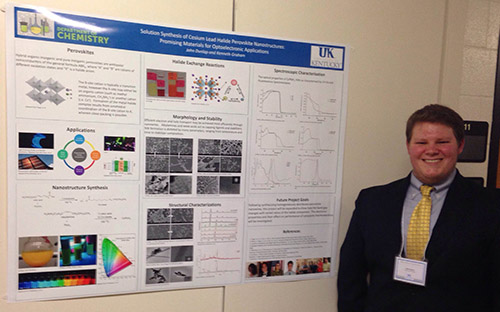 2015-11-23: Congratulations to Zhiming Liang on passing his oral qualifying examination!
2015-11-01: Thanks to Kamal Butrouna we are now able to measure Seebeck coefficients of thin films!
2015-11-23: Congratulations to Zhiming Liang on passing his oral qualifying examination!
2015-11-01: Thanks to Kamal Butrouna we are now able to measure Seebeck coefficients of thin films!
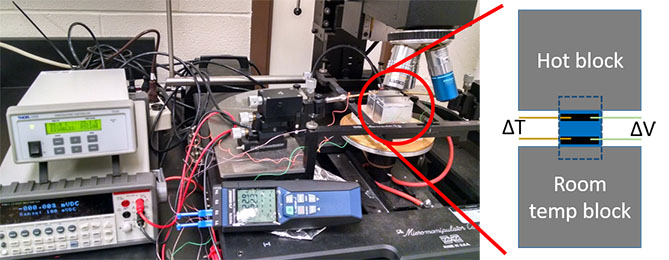
The above image shows our setup for measuring the Seebeck coefficients in thin-film thermoelectric materials. A temperature gradient is applied accross a thin film on a glass substrate, while thermocouples and thin gold wires are utilized to contact the sample for temperature and voltage measurements between the two electrodes. Depending on the material, a temperature difference of 10 degrees C can result in over a millivolt difference in electrical potential between the electrodes. This setup highlights the basics of measuring the Seebeck coefficient, and highlights how small amounts of otherwise wasted thermal energy can be utilized to generate electrical power!
2015-10-15: Md Aslam Uddin, a first year graduate student in chemistry, joins the group!
 2015-10-15: Thuy Nguyen, an undergraduate student in chemistry, joins the group!
2015-10-15: Thuy Nguyen, an undergraduate student in chemistry, joins the group!
 2015-09-21: Congratulations to Zhiming on having his paper on the surface modification of silver nanowires for composite transparent electrodes published in ACS Applied Materials & Interfaces!
2015-09-21: Congratulations to Zhiming on having his paper on the surface modification of silver nanowires for composite transparent electrodes published in ACS Applied Materials & Interfaces!
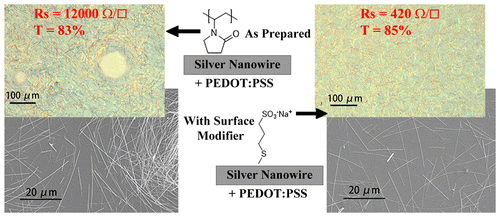
We demonstrate that surface modifying groups can be utilized to influence both film morphology and electrical conductivity in silver nanowire-polymer composites. This work shows that an adsorbed polymer on the silver nanowire surface can be displaced by thiols with varying end groups, and through choice of thiol end group the electrical and morphological properties of the composite, as well as the solvents utilized to disperse the silver nanowires, can be manipulated. Using this approach the authors demonstrate a one-step process for fabricating homogeneous composite transparent electrodes. http://pubs.acs.org/doi/abs/10.1021/ acsami.5b06489
2015-01-09: Our ultrahigh vacuum system with XPS capabilities is now setup!
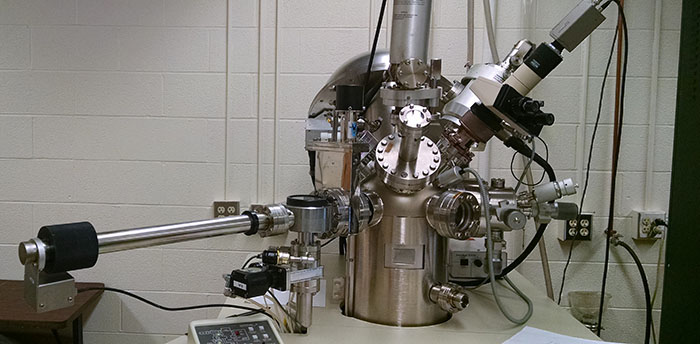
Thanks to Randy at RBD instruments for providing us with a great system and training the group to use the system. The system is a used PHI 5600 instrument with a multichannel plate detector, 11 inch diameter hemisphere, and dual anode (Mg and Al) X-ray source. The system will soon be outfit with an ultraviolet photon source, an inverse photoelemission spectroscopy setup, and necessary components for a direct connection to a thermal evaporator and glovebox.































